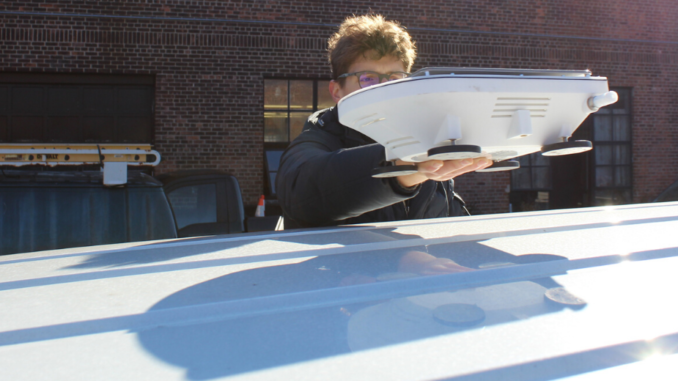
By Kevin Deutsch
[email protected]
A pilot program aimed at collecting granular air quality data is being launched in the South Bronx, as City Hall works to address the damage wrought by asthma in New York City’s most polluted borough.
Five city vehicles in the neighborhood are being equipped with state-of-the-art sensors developed by the Massachusetts Institute of Technology, and will collect block-by-block data as they drive around the borough, authorities said.
Officials hope the program, known as CityScanner, will help city government improve policies and public health in the Bronx, where child asthma death rates are three times higher than the rest of the nation, and asthma is the leading cause of hospitalization and child school absence.
Bronx kids are also twice as likely to be hospitalized for asthma and are more likely to die of asthma than other children in the U.S., researchers have found.
Currently, the city relies on an existing network of fixed censors–the New York City Community Air Survey–which tracks six different kinds of air pollution and pollution levels across the five boroughs.
The new mobile sensors can improve municipal data-gathering by collecting hyperlocal data on fine particulates–street by street–rather than relying solely on fixed censors, authorities said.
The solar powered sensors will be used for a four-week trial period. Based on the outcome, the technology could be installed on additional vehicles in the city fleet.
The city isn’t spending any of its own money on the pilot program, officials said.
“Public vehicles equipped with state-of-the-art sensors are a powerful, underutilized tool in the battle against air pollution, given the vast urban footprint they cover,” said Harold Rickenbacker of the Environmental Defense Fund, an advisor on the CityScanner project. “Municipal vehicles performing their routine jobs are capable of detecting pollution at a block-by-block level, giving policymakers unprecedented levels of data to inform environmental and public health decisions. This innovative project has the potential to position New York City as a leader with other cities, the tech community, and the private sector.”
Similar programs successfully used mobile pollution censors in cities like Houston, West Oakland, London, and Cambridge, MA, where sensors collected more than 1.6 million datapoints and helped city officials map pollution hotspots.
Bronx Borough President Ruben Diaz Jr. called the program a “model for how effective it can be to incorporate sustainable technology into municipal operations.”
“Air quality is closely tied to many health outcomes and I’m thrilled to see the city embrace this cutting-edge measure to utilize existing resources toward such an important new purpose,” Diaz said.
